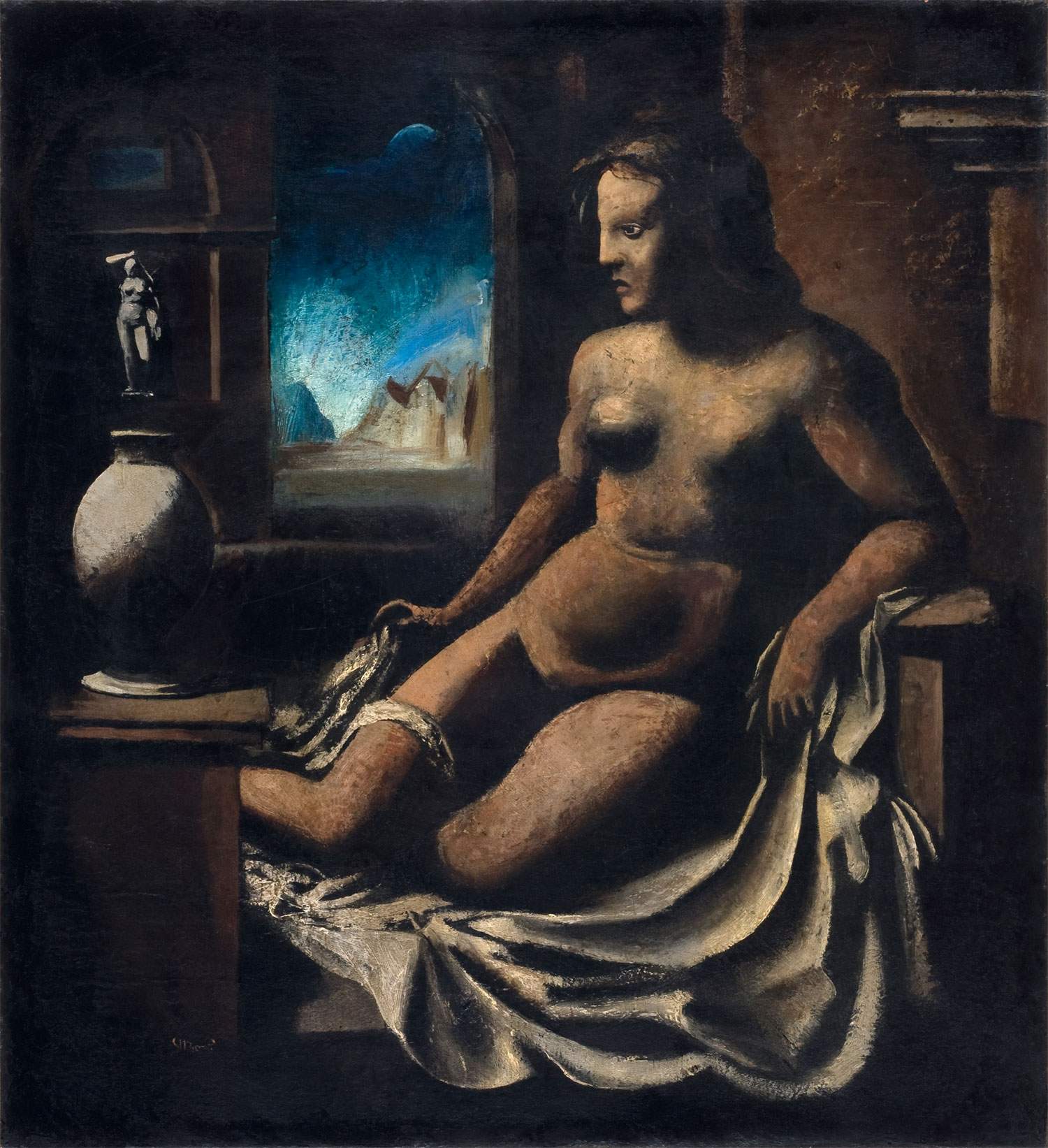A major exhibition on Mario Sironi in Milan on the 60th anniversary of his death
From July 23, 2021 to March 31, 2022, the Museo del Novecento in Milan is dedicating a major exhibition to Mario Sironi(Sassari, 1885 - Milan, 1961): it is Mario Sironi. Synthesis and Grandiosity, a retrospective that traces the work of the great artist sixty years after his death, curated by Elena Pontiggia and Anna Maria Montaldo, in collaboration with Andrea Sironi-Strausswald (Associazione Mario Sironi, Milan) and Romana Sironi (Archivio Mario Sironi di Romana Sironi, Rome).
More than one hundred works are on display: the aim of the exhibition is to reconstruct Sironi’s entire artistic career, from his youthful Symbolist season to his adherence to Futurism, from his original interpretation of Metaphysics in 1919 to the classical moment of the Italian Novecento, from the Expressionist crisis of 1929-30 to the monumental painting of the 1930s, up to the post-World War II period and the ’Apocalypse painted shortly before his death. The exhibition, which is housed in the spaces of the Museo del Novecento and also extends to the Sironian rooms of the Museum itself and the Casa Museo Boschi Di Stefano, makes use of loans from major Italian museums including the Pinacoteca di Brera, Ca’ Pesaro and the Fondazione Guggenheim in Venice, the MART in Trento and Rovereto and from private collections, thus bringing together the artist’s most significant works in a single context. On display are, in fact, some masterpieces that had not appeared in a Sironian anthological exhibition for almost half a century (the fascinating Pandora, 1921-1922; Country in the Valley, 1928; Houses and Trees, 1929; The Watering Place, 1929-30), and others that have never been shown before.
Widely represented in the exhibition is the cycle of urban landscapes, Sironi’s most famous theme, which gained intensity after his arrival in Milan in 1919 and expresses both the drama of the modern city and a powerful will to build, in every sense. These include such well-known masterpieces as Synthesis of Urban Landscape, 1921; The Cathedral, 1921; Urban Landscape with Tram 1925-28, from the Museo del Novecento, exhibited at the 1928 Venice Biennale; and Periphery, 1943. Sironi, however, was also a great interpreter of the human figure. Evidence of this in the exhibition is provided by a large group of works, including the Pierfrancesque Nude of 1923, a work much beloved by Margherita Sarfatti; the mysterious Woman with Vase of 1924; the Fisherman, 1925; The Mountain Fairy, 1928; the Niobide of 1931; and the sorrowful Lazzaro, 1946, where, for the first time in the subject’s age-old iconography, Sironi paints a Lazarus who does not rise again, a symbol of the collapse of all his ideas, beginning with the fascism in which the artist had believed.
Ample space is then devoted to Mario Sironi’s connection with mural painting in the 1930s, of which he was a theoretician and interpreter. Present, monumental masterpieces such as the luminous Winged Victory, the gigantic study for the aula magna of the Sapienza University in Rome, the visionary Condottiero a cavallo (all made in 1935) and the powerful preparatory study, almost six meters long, of Giustizia Corporativa (1937-38). Leaving behind the section devoted to mural painting, the “journey” through Sironi’s art comes to an end in the final rooms that document the artist’s dramatic final years, tormented also by the loss of his daughter Rossana, who took her own life in 1948 at the age of eighteen.
Accompanying the exhibition is a catalog produced by Casa Editrice Ilisso. In addition to the introductory essay by Anna Maria Montaldo, the volume includes an extensive essay and analytical files on all the works by Elena Pontiggia, a scholar of the artist and author of the first biography of the artist(Sironi. The Greatness of Art, the Tragedies of History, 2015), as well as insights by Fabio Benzi on Sironi’s futurism, and by Maria Fratelli, director of the Boschi Di Stefano House Museum, who explores with unpublished letters Sironi’s relationship with collectors Antonio and Marieda Boschi. Mario Sironi. Synthesis and Grandiosity is part of La Bella Estate, the summer cultural schedule promoted by the City of Milan that, until Sept. 21, will offer the Milanese and visitors to the city a rich calendar of artistic, cultural, sports, recreational and leisure initiatives.
Image: Mario Sironi, Pandora (1921-1922)
 |
| A major exhibition on Mario Sironi in Milan on the 60th anniversary of his death |
Warning: the translation into English of the original Italian article was created using automatic tools. We undertake to review all articles, but we do not guarantee the total absence of inaccuracies in the translation due to the program. You can find the original by clicking on the ITA button. If you find any mistake,please contact us.





























